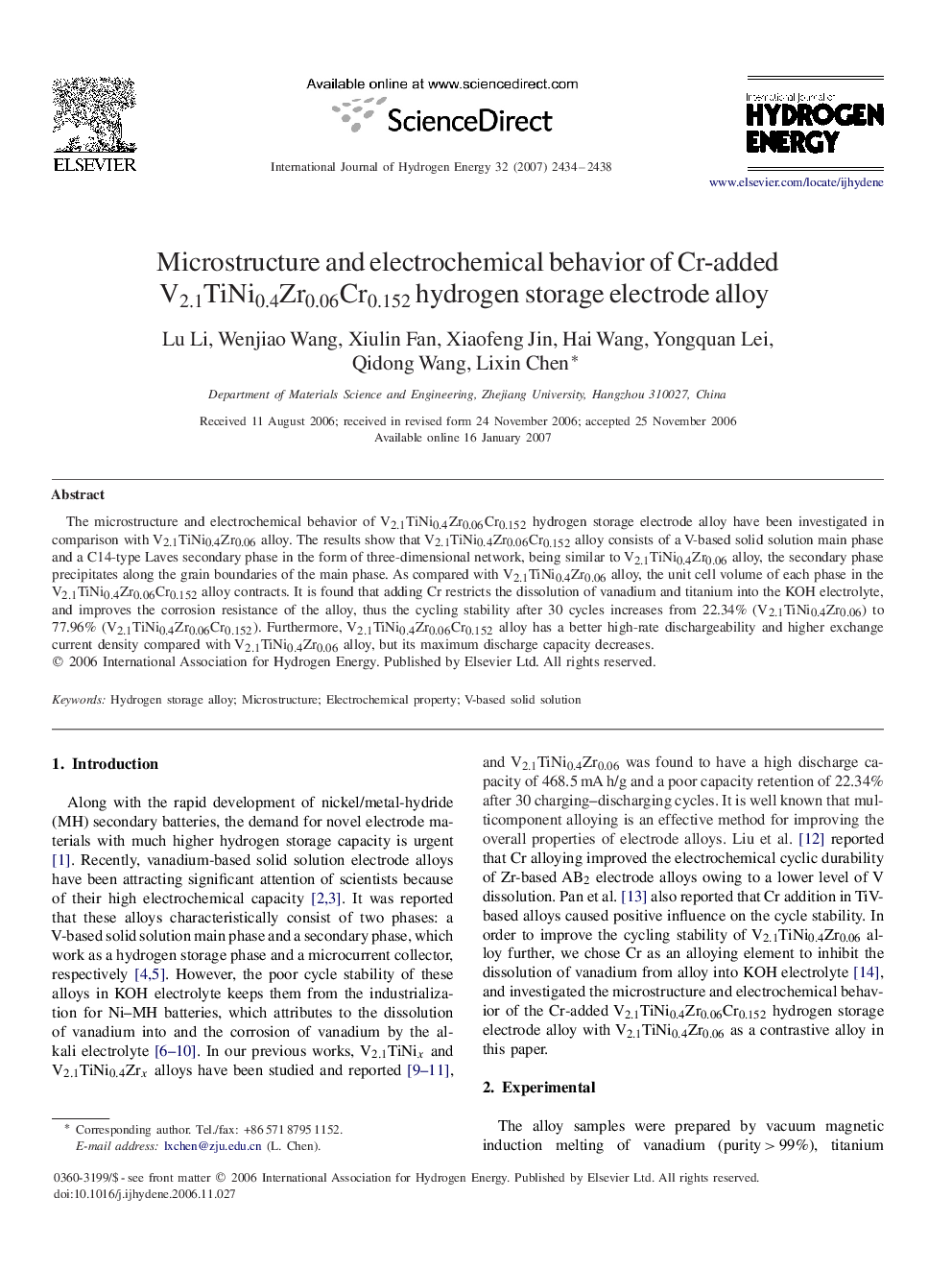| Article ID | Journal | Published Year | Pages | File Type |
|---|---|---|---|---|
| 1280350 | International Journal of Hydrogen Energy | 2007 | 5 Pages |
The microstructure and electrochemical behavior of V2.1TiNi0.4Zr0.06Cr0.152 hydrogen storage electrode alloy have been investigated in comparison with V2.1TiNi0.4Zr0.06 alloy. The results show that V2.1TiNi0.4Zr0.06Cr0.152 alloy consists of a V-based solid solution main phase and a C14-type Laves secondary phase in the form of three-dimensional network, being similar to V2.1TiNi0.4Zr0.06 alloy, the secondary phase precipitates along the grain boundaries of the main phase. As compared with V2.1TiNi0.4Zr0.06 alloy, the unit cell volume of each phase in the V2.1TiNi0.4Zr0.06Cr0.152 alloy contracts. It is found that adding Cr restricts the dissolution of vanadium and titanium into the KOH electrolyte, and improves the corrosion resistance of the alloy, thus the cycling stability after 30 cycles increases from 22.34% (V2.1TiNi0.4Zr0.06) to 77.96% (V2.1TiNi0.4Zr0.06Cr0.152). Furthermore, V2.1TiNi0.4Zr0.06Cr0.152 alloy has a better high-rate dischargeability and higher exchange current density compared with V2.1TiNi0.4Zr0.06 alloy, but its maximum discharge capacity decreases.
